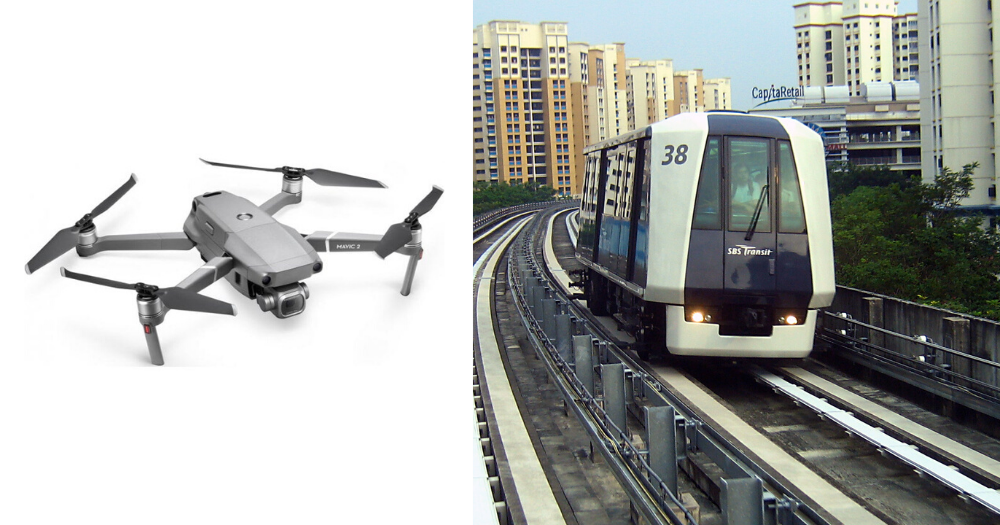A full-time national serviceman was flying a drone next to Sengkang LRT station when it landed on the train tracks and struck an oncoming train.
The incident occurred in Feb. 8 last year, and the accused, Homen Wong, pleaded guilty to endangering public safety on Dec. 18, 2019.
Drone became low on battery power
21-year-old Wong had flown his DJI Mavic Pro drone in an open field beside the LRT station, without acquiring a Class 2 activity permit from the Civil Aviation Authority of Singapore (CAAS).
According to court documents, his drone was flown close to and over the train tracks, as he had been trying to get aerial videos and shots of LRT trains entering and leaving the station.
He had also flown it over pedestrian walkways.
However after around 40 minutes of flying, during which Wong flew the drone at maximum heights of 50m, the drone became low on battery power.
Wong did not ensure the drone's battery power was sufficient enough before flying, and he then lost control of the drone.
The device then landed autonomously on the train tracks of Sengkang LRT station.
It was subsequently struck by an LRT train.
Uploaded drone video to YouTube
Later in the evening, Wong approached staff at the station to ask for help in retrieving his drone.
Staff eventually managed to recover the damaged drone on Feb. 15 and return it to its owner.
Fortunately, the train was not damaged when it struck the drone, and there was no disruption to train services.
Wong then uploaded a video of the incident to YouTube, titled "DJI Mavic Pro survived a train crash".
After the video was circulated around online, SBS Transit reported it to CAAS on Apr. 9 last year.
The video appears to have been taken down since.
Penalties
Wong pleaded guilty to endangering the safety of persons and property by operating the drone without a CAAS permit.
Should Wong have applied for the permit, CAAS would require him to operate the drone in safe conditions, which include:
- Ensuring the drone is not flown for longer than 85 per cent of its battery endurance,
- Ensuring the drone does not fly over persons, public roads, vehicles and other structures,
- Ensuring the drone does not interfere with public transport or emergency service providers, or endanger members of the public.
Wong would also have to obtain clearance from the Republic of Singapore Air Force before flying the drone to ensure that it does not interfere with RSAF operations.
For such actions, first-time offenders could face a fine of up to S$20,000, while repeat offenders can be jailed for up to 15 months and fined up to S$40,000.
According to The Straits Times, a second charge of operating a drone without a Class 2 permit within 5km of Seletar Airport and Paya Lebar Air Base, will be considered during sentencing.
Wong will be sentenced on Jan. 9, 2020.
Top photo from heliguy.com and Wikipedia
If you like what you read, follow us on Facebook, Instagram, Twitter and Telegram to get the latest updates.
